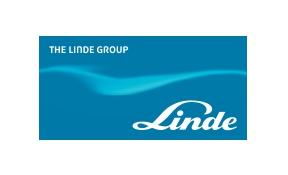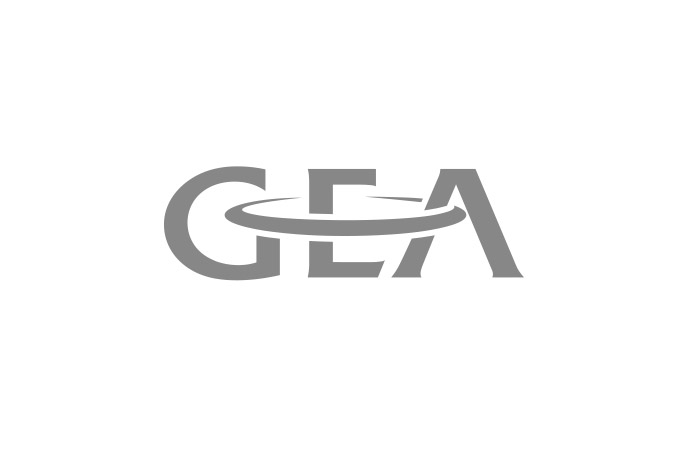The third article on ATMOshpere 2010 gives an overview of second day presentations provided during dedicated sessions on air-conditioning and heat pumps by representatives from MAYEKAWA, the Green Cooling Association and Earthcare Products. The presentations are available now in the paper section.

Brent Hoare, Natural Refrigerants - an update from down-under, Green Cooling Association
According to scientific findings, the production and consumption of HFCs could be responsible for up to 45% of worldwide CO2e emissions by 2050 hence why a transition to natural refrigerants is sought. Training constitutes an essential prerequisite for this transition. In Australia, the Refrigeration and Air Conditioning Contractors Association of New South Wales (RACCA NSW) has worked in partnership with the regional Technical and Further Education College (TAFE) to develop and deliver accredited training programmes for technicians on CO2 and hydrocarbons. It has also run awareness sessions on natural refrigerants, obtained equipment operating on natural refrigerants for regional TAFE campuses through industry donations and upskilled TAFE NSW teachers to deliver safety awareness and systems training in natural refrigerants.
Regarding mobile air conditioning (MAC), many TAFE colleges in Australia now teach the safe use of hydrocarbons as part of their normal training for tradesmen/apprentices. Since 1990 over 200 tonnes of hydrocarbons have been sold in Australia to the MAC re-gas market, avoiding over 800,000,000kg of CO2 emissions. At least one small scale vehicle OEM uses HyChill hydrocarbon refrigerant in their production. Another is seriously considering the issue because of the excellent results being achieved by one of their distributors who converts the systems to hydrocarbons prior to delivery, a practice followed by a number of OEM distributors. Other applications of natural refrigerants in Australia include the mining sector, with a number of mining operators having a policy that HFCs are prohibited from their site in all vehicles and all must be converted to hydrocarbons. The Australian market has also seen new and converted transport refrigeration systems on hydrocarbons (350 systems on the roads), as well as the availability of hydrocarbon room air-conditioning systems and hot water systems.
South East Asian countries such as Indonesia, Malaysia, the Philippines and Singapore have seen a great number of conversions of air conditioning systems in commercial buildings to hydrocarbons as well as car air-conditioners.
Before closing his presentation, Hoare underlined that a key barrier to the wider adoption of natural refrigerants is the false claims on labels of HFC equipment claiming to be using “environmentally friendly” gases.
Mr Jan Boone, A new range of cooling applications using natural refrigerants, Mayekawa
Actively addressing energy shortage and the global warming challenge, Mayekawa has shifted its focus towards the “natural five” refrigerants: hydrocarbons, carbon dioxide, ammonia, water, and air. Mayekawa develops and manufactures a wide range of refrigeration systems that can be applied for heating, drying, hot water supply, air conditioning, cooling, chilling and freezing, covering a multitude of temperatures from -100°C to +200°C completely by “chemical refrigerant free” technology. More recently, the company has developed a new series of adsorption heat pumps using a new type of adsorbent, namely zeolite.
In industrial refrigeration applications the use of natural refrigerants can be widened through:
Nicholas Cox, Innovative designs for plant room chillers using hydrocarbon refrigerants, Earthcare Products
Significant life cycle cost savings in the magnitude of 27% can be achieved by employing hydrocarbon (R290) air cooled chillers compared to R134a chillers. For example, an R290 chiller of 650kW cooling capacity has been catering efficiently for the comfort cooling needs of the Church House, Westminster, London. Air cooled water chillers with hydrocarbon refrigerants are much easier to adopt for standards in external installations rather than internal ones and given their energy savings it is surprising that they have not been adopted more widely.
A significant breakthrough within the last year, leading to higher efficiency of hydrocarbon chillers, has been the use of inverters on screw compressors with hydrocarbons. However, there is the potential to do even better, as even higher efficiencies can be achieved with water cooled chillers. The challenge then becomes on how to use hydrocarbons in applications where normally water cooled chillers are used. One way would be to have an open air “plant room”, though the best way forward according to Cox are prefabricated chiller plantrooms, i.e. the more work you can do offsite the better.
Besides chillers, hydrocarbon refrigerant blends offer great opportunities as HFC replacements in a wide range of applications. For example, R432A, an R1270/E170 (80.0/20.0) hydrocarbon blend, can serve as HFC R407C replacement (NPB -44°C), while three different hydrocarbon blends are proposed as replacements for HCFC123, a refrigerant used particularly in hot ambient temperatures for air conditioning. Overall, hydrocarbons offer an infinite number of possibilities, when blends are considered, as there is an infinite number of permutations.
All ATMOsphere 2010 presentations are available in the paper section.
According to scientific findings, the production and consumption of HFCs could be responsible for up to 45% of worldwide CO2e emissions by 2050 hence why a transition to natural refrigerants is sought. Training constitutes an essential prerequisite for this transition. In Australia, the Refrigeration and Air Conditioning Contractors Association of New South Wales (RACCA NSW) has worked in partnership with the regional Technical and Further Education College (TAFE) to develop and deliver accredited training programmes for technicians on CO2 and hydrocarbons. It has also run awareness sessions on natural refrigerants, obtained equipment operating on natural refrigerants for regional TAFE campuses through industry donations and upskilled TAFE NSW teachers to deliver safety awareness and systems training in natural refrigerants.
Regarding mobile air conditioning (MAC), many TAFE colleges in Australia now teach the safe use of hydrocarbons as part of their normal training for tradesmen/apprentices. Since 1990 over 200 tonnes of hydrocarbons have been sold in Australia to the MAC re-gas market, avoiding over 800,000,000kg of CO2 emissions. At least one small scale vehicle OEM uses HyChill hydrocarbon refrigerant in their production. Another is seriously considering the issue because of the excellent results being achieved by one of their distributors who converts the systems to hydrocarbons prior to delivery, a practice followed by a number of OEM distributors. Other applications of natural refrigerants in Australia include the mining sector, with a number of mining operators having a policy that HFCs are prohibited from their site in all vehicles and all must be converted to hydrocarbons. The Australian market has also seen new and converted transport refrigeration systems on hydrocarbons (350 systems on the roads), as well as the availability of hydrocarbon room air-conditioning systems and hot water systems.
South East Asian countries such as Indonesia, Malaysia, the Philippines and Singapore have seen a great number of conversions of air conditioning systems in commercial buildings to hydrocarbons as well as car air-conditioners.
Before closing his presentation, Hoare underlined that a key barrier to the wider adoption of natural refrigerants is the false claims on labels of HFC equipment claiming to be using “environmentally friendly” gases.
Mr Jan Boone, A new range of cooling applications using natural refrigerants, Mayekawa
Actively addressing energy shortage and the global warming challenge, Mayekawa has shifted its focus towards the “natural five” refrigerants: hydrocarbons, carbon dioxide, ammonia, water, and air. Mayekawa develops and manufactures a wide range of refrigeration systems that can be applied for heating, drying, hot water supply, air conditioning, cooling, chilling and freezing, covering a multitude of temperatures from -100°C to +200°C completely by “chemical refrigerant free” technology. More recently, the company has developed a new series of adsorption heat pumps using a new type of adsorbent, namely zeolite.
In industrial refrigeration applications the use of natural refrigerants can be widened through:
- Promoting natural working fluids aggressively in the proven industrial field
- Introducing natural working fluids in the commercial and consumer field
- Tightening of regulation on HFCs and encouraging the funding for the prevalence of refrigeration systems using natural refrigerants and their development
Nicholas Cox, Innovative designs for plant room chillers using hydrocarbon refrigerants, Earthcare Products
Significant life cycle cost savings in the magnitude of 27% can be achieved by employing hydrocarbon (R290) air cooled chillers compared to R134a chillers. For example, an R290 chiller of 650kW cooling capacity has been catering efficiently for the comfort cooling needs of the Church House, Westminster, London. Air cooled water chillers with hydrocarbon refrigerants are much easier to adopt for standards in external installations rather than internal ones and given their energy savings it is surprising that they have not been adopted more widely.
A significant breakthrough within the last year, leading to higher efficiency of hydrocarbon chillers, has been the use of inverters on screw compressors with hydrocarbons. However, there is the potential to do even better, as even higher efficiencies can be achieved with water cooled chillers. The challenge then becomes on how to use hydrocarbons in applications where normally water cooled chillers are used. One way would be to have an open air “plant room”, though the best way forward according to Cox are prefabricated chiller plantrooms, i.e. the more work you can do offsite the better.
Besides chillers, hydrocarbon refrigerant blends offer great opportunities as HFC replacements in a wide range of applications. For example, R432A, an R1270/E170 (80.0/20.0) hydrocarbon blend, can serve as HFC R407C replacement (NPB -44°C), while three different hydrocarbon blends are proposed as replacements for HCFC123, a refrigerant used particularly in hot ambient temperatures for air conditioning. Overall, hydrocarbons offer an infinite number of possibilities, when blends are considered, as there is an infinite number of permutations.
All ATMOsphere 2010 presentations are available in the paper section.
MORE INFORMATION
Related stories













